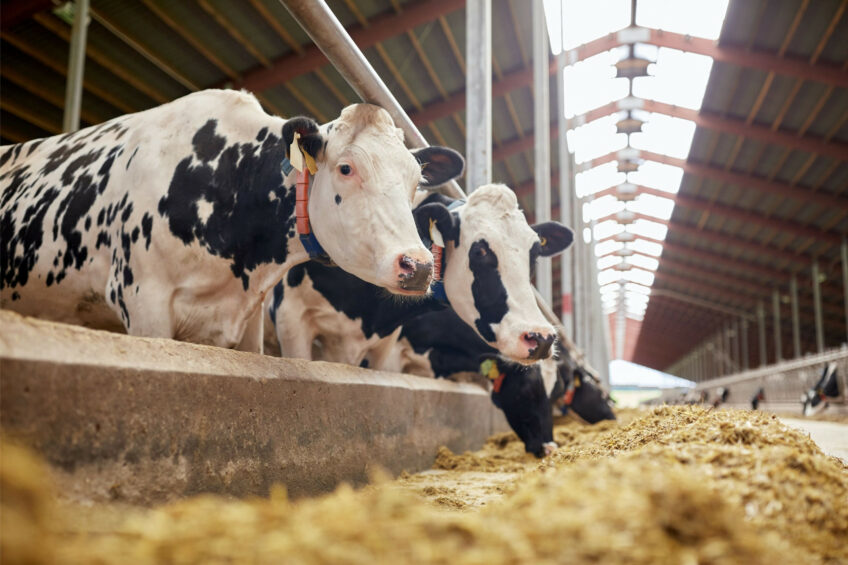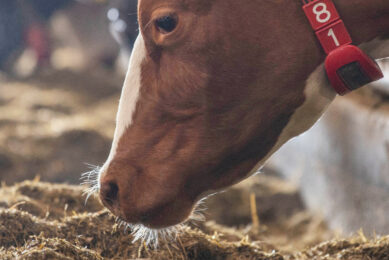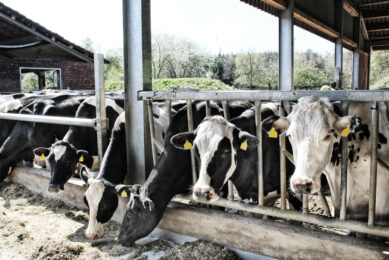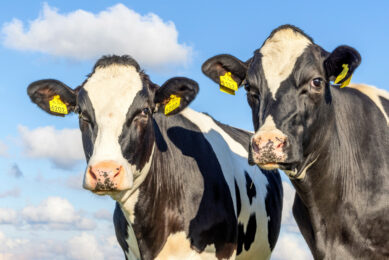Reducing ‘human-edible’ ingredients in the diet of dairy cows

Milk yields of both early and late lactation cows could be maintained when fed rations with reduced levels of cereals and soybean meal, but it would affect milk fat and protein content.
Dairy cows have the ability to digest feedstuffs that are inedible to humans, including grazed grass and grass silage, and use them to produce milk. However, high-yielding cows are normally fed large amounts of concentrates to support milk production and these concentrates often contain ingredients, such as wheat and maize, that can be consumed by humans.
Human-edible ingredients in dairy diets
The use of these ‘human edible’ ingredients in livestock diets is being increasingly challenged as we seek to feed a growing global population, and the sustainability of some feed ingredients, such as soybean meal, comes under further scrutiny.
Given these challenges, it makes sense to consider using ingredients in dairy rations that are ‘low human edible’, such as rapeseed meal and distillers grains, and to reduce the use of soybean meal.
A study by the Agri-food and Biosciences Institute at Hillsborough, Northern Ireland, assessed the impact of dairy cow performance when adopting rations based on low human-edible ingredients. Results from an earlier study indicated that reducing the inclusion of human-edible ingredients in dairy cow concentrates had little impact on the performance of mid-late lactation dairy cows, but might have more of an effect on earlier lactation cows.
A study of early and late-lactation dairy cows
The trial involved 40 dairy cows, 20 in early lactation and 20 in late lactation. All cows were offered one of 2 concentrate types in the form of a total mixed ration with concentrates containing either 51% human-edible ingredients, containing soybean meal, sugar beet pulp, barley, wheat, maize, soya hulls, maize gluten, wheatfeed, molasses, minerals and vitamins, or 18% human-edible ingredients. These included rapeseed meal, sugar beet pulp, wheatfeed, maize gluten, soya hulls, distillers’ dark grains, molasses, minerals and vitamins, and protected fat.
Both concentrate types were formulated to have similar crude protein and metabolisable energy concentration, while the high human-edible concentrate had a higher starch content (22.7%) than the low human-edible concentrate (6.9%). Daily dry matter intake, milk yields, milk composition and edible feed conversion rate (eFCR) were measured during the experiment. eFCR was defined as the quantity of human-edible output in milk divided by the amount of human-edible feed used to generate it.
The response of cows to the inclusion of human-edible ingredients
As expected, early-lactation cows had a greater feed intake and milk yield and poorer milk composition than late-lactation cows. However, concentrate type had little impact on either feed intake or milk yield within early or late lactation groups. This disproved the hypothesis that early lactation cows would show a better response to the inclusion of human-edible ingredients in the diet. Nevertheless, irrespective of stage of lactation, cows offered the high human-edible concentrate, in this study, produced milk with a higher milk fat and protein concentration. This, in turn, increased the value of each litre of milk produced and the ‘Margin-Over-Concentrate’ for cows offered rations high in human-edible ingredients.
However, cows offered the concentrate high in human-edible ingredients had a lower eFCR value than cows offered the ration low in human-edible ingredients. Scientists felt this was important because while animals in all the treatment groups generated a greater human-edible output (milk) relative the quantity of human-edible inputs offered (concentrate), the response of cows offered the low human-edible concentrates was 2.5 times greater than that of cows offered the high human-edible concentrates.
The improvements in eFCR observed with cows offered the concentrates low in human-edible feed ingredients demonstrates that we can make greater use of by-product ingredients in dairy cow diets and in doing so we can free up more human-edible ingredients to feed the growing global population.
Further studies are underway to assess the long-term impacts of feeding these rations.
Summary
This experiment demonstrated that feeding dairy cow rations based on low human-edible ingredients (no cereals or soybean meal) had little impact on the milk yield of early or late lactation cows, although milk fat and protein concentration were reduced. As a result, in this study, Margin-Over-Concentrate decreased marginally. However, cows offered concentrate with a reduced human-edible fraction produced milk with a higher human-edible feed conversion rate.
Join 13,000+ subscribers
Subscribe to our newsletter to stay updated about all the need-to-know content in the dairy sector, two times a week.










